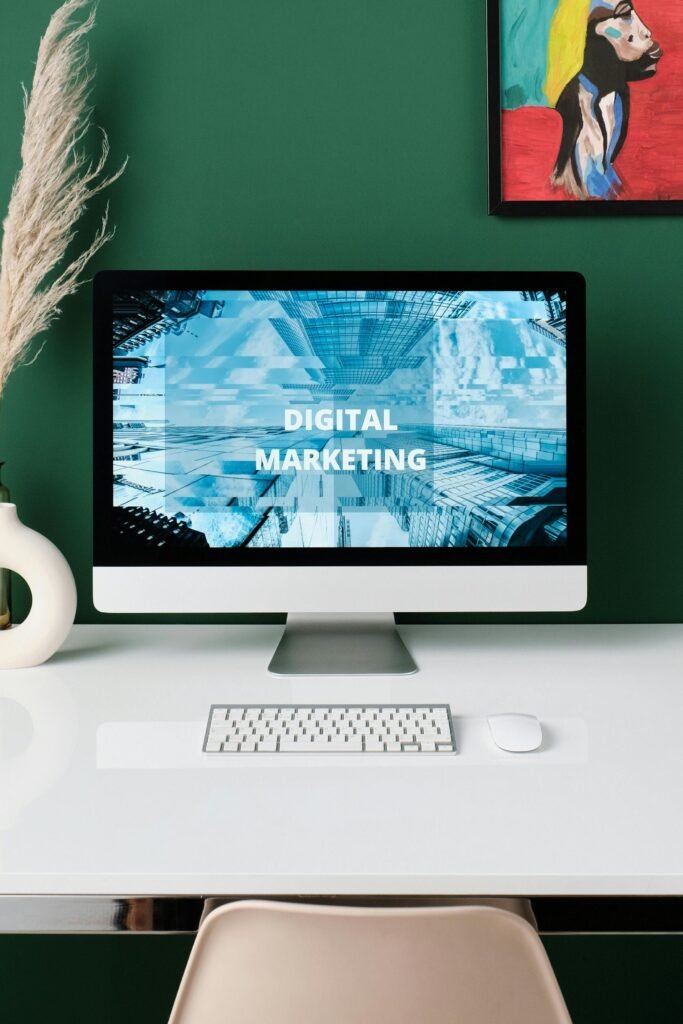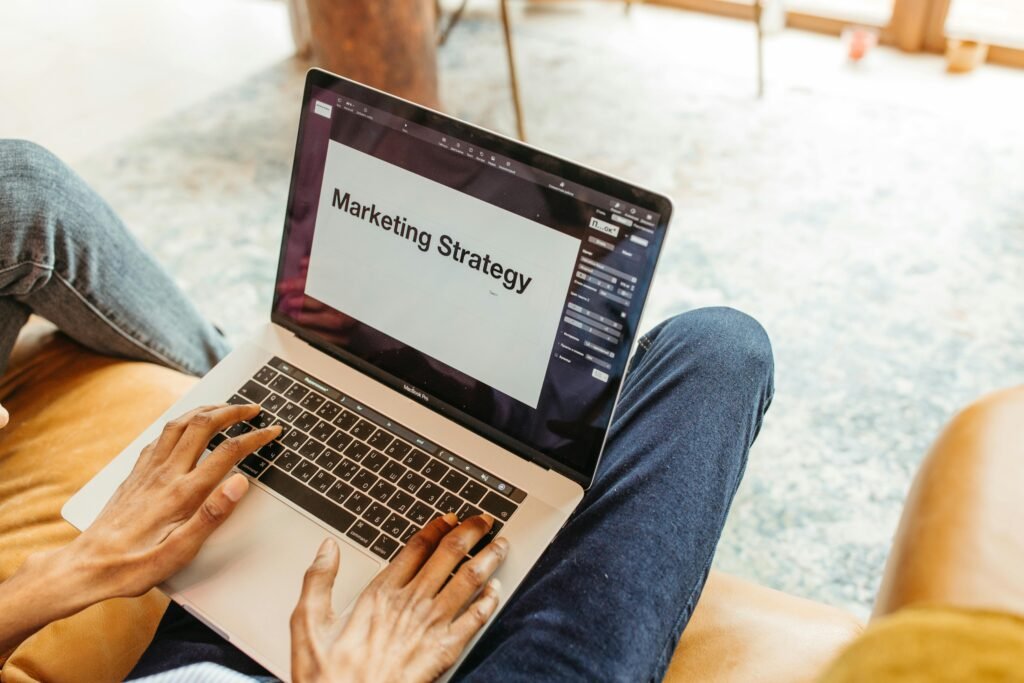What is Digital Marketing? A Beginner’s Complete Guide

Introduction
In today’s fast-paced world, almost everything is online — from shopping and entertainment to education and business. Companies are no longer relying only on TV ads, billboards, or newspapers to reach customers. Instead, they are shifting to digital marketing, which allows them to connect with people through the internet and smart devices.
If you’ve ever seen an ad on Instagram, read a blog post before buying a product, or received a promotional email, you’ve already experienced digital marketing in action.
But what exactly is digital marketing, how does it work, and why is it so important?
This beginner-friendly guide will explain everything step by step, including:
The definition and importance of digital marketing
Different types of digital marketing
How it works
Skills required to become a digital marketer
Career opportunities and salaries
Tips to get started in 2025
By the end of this guide, you’ll have a clear understanding of digital marketing and how you can use it to grow your career or business.
1. What is Digital Marketing?
Digital Marketing is the process of promoting products, services, or brands online using various digital channels such as websites, search engines, social media, emails, and paid ads.
In simple words, it’s marketing done on the internet or any digital platform.
It allows businesses to connect with their target audience quickly and cost-effectively.
Simple Example:
- A local bakery runs an ad on Instagram to promote a new cake flavor.
- Customers see the ad, click the link, and place an order directly from their phone.
- The bakery increases sales without spending huge amounts on print or TV ads.
This is digital marketing at work!
Why Digital Marketing is Important
Here’s why every business and professional needs digital marketing today:
- Wider Reach: You can reach a global audience, unlike traditional marketing.
- Cost-Effective: Online ads are cheaper than billboards or TV commercials.
- Real-Time Tracking: You can measure results instantly using analytics tools.
- Targeted Marketing: Show ads only to people who are interested in your product.
- Career Growth: Digital marketing is one of the fastest-growing industries worldwide.
💡 Fact Check:
The digital advertising market in India alone is expected to reach ₹500 billion by 2026, creating millions of job opportunities.
2. How Digital Marketing Works
Digital marketing works by attracting potential customers, engaging them, and converting them into paying clients through online platforms.
Here’s a step-by-step breakdown:
Step 1: Awareness
The first step is to make people aware of your product or service.
- Example: A brand posts Instagram reels showcasing their new fashion collection.
Step 2: Interest
Once people know about you, your next goal is to spark their interest.
- Example: Writing a blog post about “Top Fashion Trends in 2025” to educate potential customers.
Step 3: Decision
Provide offers, free trials, or discounts to convince the audience to take action.
- Example: Running a limited-time sale on your website.
Step 4: Action
This is where the conversion happens — the customer makes a purchase, signs up, or books a service.
- Example: A customer buys the fashion product after seeing the ad.
This process is also called the Digital Marketing Funnel.

3. Types of Digital Marketing
Digital marketing isn’t just one thing — it includes multiple channels that work together to promote a brand effectively.
Here are the main types of digital marketing you need to know:
1. Search Engine Optimization (SEO)
SEO is the process of optimizing your website so it appears at the top of Google search results when people search for relevant keywords.
- Example: When you search “best smartphones under ₹20,000,” the top-ranked websites are using SEO.
Why it matters:
- Brings free, organic traffic to your website.
- Builds trust and credibility for your brand.
Basic SEO tasks include:
- Keyword research
- Writing optimized content
- Building backlinks
- Improving website speed and mobile-friendliness
2. Social Media Marketing (SMM)
Social media platforms like Instagram, Facebook, LinkedIn, and YouTube are powerful tools for marketing.
Brands use them to connect directly with their audience through engaging content, ads, and influencer collaborations.
Example:
- A beauty brand collaborates with influencers to promote a skincare product through Instagram reels.
Benefits:
- Builds brand awareness.
- Drives website traffic.
- Increases sales through paid ads.
3. Content Marketing
“Content is king” — and digital marketing thrives on valuable content.
Content marketing involves creating and sharing blogs, videos, infographics, podcasts, and more to educate and engage your audience.
Example:
- A travel agency writes a blog titled “Top 10 Budget-Friendly Destinations in India” to attract travelers searching on Google.
Goal:
To provide helpful information that subtly promotes your product or service.
4. Email Marketing
Email marketing is a direct way to connect with customers.
It’s commonly used for:
- Sending newsletters
- Sharing offers and discounts
- Following up after purchases
Example:
- A clothing brand sends a “20% off for your first purchase” email to new subscribers.
Why it works:
It’s highly personalized and cost-effective.
5. Pay-Per-Click Advertising (PPC)
PPC is paid advertising where you pay every time someone clicks on your ad.
- Common platforms: Google Ads, Facebook Ads, Instagram Ads.
Example:
- A real estate company runs Google search ads for “flats for sale in Mumbai.”
Benefit:
Instant visibility and leads, even for new businesses.
6. Affiliate Marketing
Affiliate marketing is when brands pay individuals or websites to promote their products and generate sales.
- Example: Bloggers promoting Amazon products and earning commissions for every sale.
It’s a great way to earn passive income while growing brand reach.
7. Influencer Marketing
Influencer marketing uses popular social media personalities to promote products.
- Example: A fitness influencer promoting a protein supplement on Instagram.
This works well because people trust influencers they follow.
8. Mobile Marketing
With most internet users on smartphones, mobile marketing focuses on:
- SMS campaigns
- App-based ads
- Push notifications
- Mobile-friendly website design
Example:
- Food delivery apps sending notification offers like “Flat 50% off on your next order!”

4. Benefits of Digital Marketing
Learning and applying digital marketing has huge advantages for both individuals and businesses.
For Businesses:
- Cost-Effective Marketing: Reach thousands of people at a fraction of traditional marketing costs.
- Targeted Advertising: Show ads to specific age groups, locations, or interests.
- Real-Time Data: Track results instantly and make changes quickly.
- Better Customer Engagement: Direct interaction through social media and email.
For Professionals:
- High Career Demand: Millions of job opportunities globally.
- Freelancing Freedom: Work with clients worldwide.
- Business Growth: Promote your own startup or side hustle.
- Future-Proof Skill: Digital marketing will continue to grow with technology.
5. Skills Required for Digital Marketing
To become a successful digital marketer, you need a mix of technical and soft skills.
Technical Skills
- SEO and keyword research
- Paid ads management (Google Ads, Facebook Ads)
- Content creation and copywriting
- Email marketing tools like Mailchimp
- Analytics and reporting (Google Analytics)
- Social media strategy and tools
Soft Skills
- Creativity
- Problem-solving
- Analytical thinking
- Communication skills
- Adaptability to new trends
💡 Pro Tip: You don’t need to master everything at once. Start with one area like SEO or social media, then expand gradually.
6. Digital Marketing Career Opportunities
Digital marketing offers diverse job roles across different industries.
Here are some of the most popular career paths:
Job Roles:
- Digital Marketing Executive
- SEO Specialist
- Social Media Manager
- Content Strategist
- PPC Expert
- Email Marketing Specialist
- Digital Marketing Manager
- Freelancer / Consultant
Industries Hiring Digital Marketers:
- E-commerce
- Healthcare
- Education
- Real Estate
- Fashion & Lifestyle
- IT Companies
- Hospitality and Tourism
Average Salaries in India (2025):
| Role | Salary Range (Per Year) |
|---|---|
| Digital Marketing Executive | ₹3 – ₹5 LPA |
| SEO Specialist | ₹4 – ₹6 LPA |
| Social Media Manager | ₹4 – ₹7 LPA |
| PPC Specialist | ₹5 – ₹8 LPA |
| Digital Marketing Manager | ₹8 – ₹15 LPA |
| Freelancer | ₹30,000 – ₹1,00,000+ per month |
💼 Fact: With experience and specialized skills, digital marketing professionals can earn up to ₹25 LPA or more.
7. How to Get Started in Digital Marketing
If you’re a beginner, here’s a step-by-step roadmap to start your journey:
Step 1: Learn the Basics
- Watch free YouTube tutorials.
- Explore free courses on Google Digital Garage, HubSpot, or Coursera.
Step 2: Choose a Specialization
Focus on one area first:
- SEO, Social Media Marketing, PPC, or Content Marketing.
Step 3: Enroll in a Structured Course
A professional digital marketing course provides practical skills, certifications, and career guidance.
Step 4: Practice with Live Projects
- Build a personal blog or website.
- Run small ad campaigns with a limited budget.
- Practice social media management.
Step 5: Build a Portfolio
Showcase your work through a digital marketing portfolio or LinkedIn profile.
Step 6: Apply for Internships or Freelancing
Gain real-world experience by:
- Applying for internships.
- Offering services on platforms like Upwork and Fiverr.
8. Future of Digital Marketing in 2025 and Beyond
Digital marketing is evolving rapidly with AI, voice search, and automation.
Here are a few trends to watch:
- AI-driven Marketing: Chatbots, predictive analytics, and personalized ads.
- Video Content Growth: Short videos like Instagram Reels and YouTube Shorts.
- Voice Search Optimization: Optimizing for smart devices like Alexa and Google Assistant.
- Influencer Marketing Expansion: More brands collaborating with micro-influencers.
- Privacy and Data Protection: Increasing focus on ethical marketing practices.
💡 Pro Tip: Stay updated with trends by following top marketing blogs and attending webinars.
9. Final Tips for Beginners
- Start small — focus on one platform or skill at a time.
- Practice consistently with real projects.
- Build your personal brand on LinkedIn or social media.
- Keep learning — digital marketing changes every day.
- Don’t be afraid to experiment with new strategies.

Conclusion
Digital marketing is no longer the future — it’s the present.
Whether you’re a student, job seeker, business owner, or freelancer, learning digital marketing can open doors to endless opportunities.
This beginner’s guide answered “What is Digital Marketing” and explained its types, benefits, skills, and career scope.
Now, it’s time for you to take action:
- Start learning the basics.
- Enroll in a good course.
- Practice with live projects.
With dedication and the right strategy, you can build a successful career or grow your business through the power of digital marketing.
